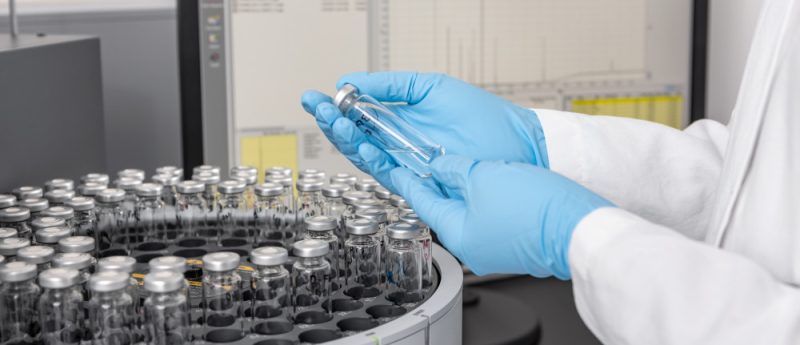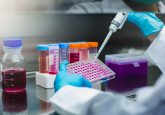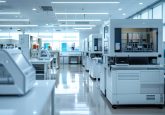The importance of sample preparation and filtration: an interview with Stephanie Schweizer

Author
Stephanie Schweizer
Manager of Product Management Lab Filtration
Sartorius (Göttingen, Germany)
Stephanie Schweizer leads the Product Management Lab Filtration team at Sartorius and has more than 10 years of experience in lab filtration and product management. Stephanie holds a degree in Biology from the University of Göttingen (Germany).
Why is sample preparation, particularly filtration, important for precise analysis?
Filtration plays a key role in the preparation of samples for chromatographic analysis, including HPLC. Its primary function is to remove particles from samples, which is critical for several reasons. Firstly, it improves the accuracy of the analysis by removing any contaminants that could potentially falsify the results. Furthermore, it is important to ensure that the data collected is a true reflection of the composition of the sample.
Filtration also protects the analytical instruments themselves. By removing particles that could clog or damage the sensitive parts of the equipment, such as the HPLC column, filtration helps to extend the life of these instruments and their consumables. This not only saves on repair and replacement costs, but also ensures that the instruments continue to provide reliable results over time.
Another benefit of proper filtration is consistency. When samples are prepared in a uniform manner, this leads to more consistent results, which is essential for comparative studies and maintaining quality of analysis. Filtration can improve the overall performance of analytical techniques by enhancing their ability to detect analytes at very low levels.
To summarize: filtration is a critical component of sample preparation, ensuring that samples are particle free and ready for precise and accurate analysis. It touches every aspect of the process, from protecting equipment to improving the quality of the data obtained.
How does sample preparation effect HPLC results and data?
Sample preparation is a critical aspect of HPLC analysis. It has a significant impact on the quality and accuracy of the results by improving the resolution of the peaks in the chromatogram, it allows better differentiation of the compounds. It also minimizes the background noise of the baseline that could cover the true signal of the analytes. Another benefit is increasing sensitivity, allowing detection of lower concentrations of substances in the sample. Consistency in sample preparation is key to achieving reproducible results, which is essential for scientific studies and quality control processes.
Consistent, and careful sample preparation improves quantification, resulting in reliable peak shapes and areas from which accurate concentrations can be derived. In addition, it also supports qualitative analysis by reducing the risk of misidentification due to impurities or overlapping peaks.
Overall, efficient sample preparation is essential for reliable and accurate HPLC analysis. It affects every aspect of the process, from the longevity of the instrument to the integrity of the data collected.
From your experience, what filtration methods and products would you recommend?
For HPLC sample preparation, the selection of the correct filtration method and product depends on the sample characteristics, the analytes and the sensitivity and requirements of the detection method. Common filtration options include syringe filters for small volumes, membrane filters in combination with filter holders for larger volumes, centrifugal filters for concentration, glass fiber filters as pre-filters and SPE for clean-up and concentration. Key considerations when selecting a filtration device are compatibility with the sample and solvents, the correct pore size for effective particle removal, and the capacity of the filter relative to the sample volume and analysis throughput.
Focusing on syringe filtration that importantly removes particulate impurities from liquid samples – what properties should scientists look out for when choosing a syringe filter?
When selecting a syringe filter, it’s important to consider the nature of the sample, the sample volume to be filtered and the appropriate pore size for the application. The composition of the sample plays a crucial role in selecting the right filter material, e.g. whether it is an aqueous solution or an organic solvent. For example, Sartorius Minisart® hydrophilic regenerated cellulose (RC) syringe filters are suitable for a wide range of samples, including most aqueous solutions and organic solvents, and have a membrane that does not contain PFAS. In addition, the presence of active ingredients in the sample must be considered when selecting syringe filter materials. A filter free of extractables with the required solvents is essential to ensure that the clarifying tool itself does not introduce additional contaminants into the sample.
Furthermore, the sample volume determines the size of the syringe filter required. Sartorius Minisart® offers syringe filters with different diameters to accommodate different volumes. Smaller diameter filters allow smaller volumes to be processed effectively.
Finally, the choice of pore size is determined by the intended application. As a general guideline, a 0.45µm pore size is sufficient for most applications. However, there are applications where smaller pore sizes are required, such as when preparing samples for ultra-high pressure liquid chromatography or when the sample is known to contain fine particles or bacterial cells that need to be removed. It is important to note with smaller pore sizes, the filtration process may become more difficult.
Looking towards the future, what developments are you excited about in regard to sample preparation and filtration?
Future trends such as automation for higher throughput, microextraction techniques for minimized solvent consumption, green chemistry approaches, 3D printing for customized devices and nanotechnology for improved selectivity are just a few examples of sample preparation and filtration that aim to overcome the current limitations, such as time, solvent consumption, and the need for more selective and sensitive methods. These innovations aim to make sample preparation faster, more accurate and more environmentally friendly and to better meet the complex requirements of today’s analytical challenges.
In association with






